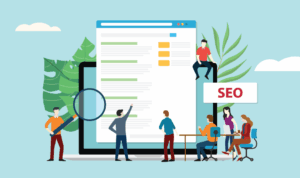You don’t need to be selling a six-figure software deal to feel the pressure of a skeptical buyer. Increasingly, low-consideration purchases—think snacks, apps, household staples, and personal care items—are facing a level of scrutiny once reserved for B2B buying committees. The hesitation doesn’t show up in contracts or redlines; it shows up in the mind. And what bridges the gap, just like in B2B, is trust.
That’s where Brand and Demand comes in. Or, as we call it — BrandDemand. It’s our approach to using the proper balance of branding and demand messages at different stages of the buyer journey to ensure efficient purchase cycles. Traditionally seen as a B2B strategy built for complex sales cycles and multi-stakeholder decisions, BrandDemand has a reputation for excelling in high-stakes environments. But its core strength isn’t complexity, it’s clarity. And clarity is something every buyer needs, whether they’re making a quick purchase or a long-term investment.
The misunderstood strategy: BrandDemand isn’t just for long sales cycles
BrandDemand is often viewed as a strategy reserved for complex, high-stakes purchases, leading to its confinement within enterprise tactics like gated content, product proof points, and multi-touch campaigns. The underlying assumption? If it’s not a heavily considered purchase, there’s no need for brand-building.
That assumption overlooks BrandDemand’s broader utility. Its true strength lies in creating confident buyers. And confidence isn’t dictated by price. Whether it’s a $5 snack or a $500 subscription, buyers pause when they don’t feel understood. They scroll past when messaging falls flat. And they disappear when trust isn’t there. BrandDemand bridges the gap by ensuring that brands resonate with their audience and that buyers feel confident, regardless of the context. This powerful connection makes brands not just relevant, but essential in today’s ever-evolving market.
Modern consumers act like enterprise buyers
Quick decisions now feel deliberate. The customer reads reviews, checks TikTok, and asks friends. They’re not just looking for speed. They’re looking for relevance. Emotional risk has replaced financial risk.
People want to feel good about what they choose. That’s not a B2B behavior. That’s human behavior.
This shift has changed the game. Content that once felt “too heavy” for low-ticket items now feels necessary. Buyers want to see themselves in your message. They want proof that your brand is more than just another ad. And they expect to believe in your product before they ever click “buy.”
What BrandDemand unlocks in fast-buy categories
BrandDemand gives structure to what many DTC and growth marketers already do instinctively. It blends brand and demand to build trust and drive action. When done intentionally, it becomes something more substantial: a scalable trust engine.
Here’s what that unlocks:
- You don’t just acquire users. You build loyalty loops.
- You don’t just retarget. You reconnect with relevance.
- You don’t just sell. You reinforce credibility.
Trust isn’t a one-time win. It fuels the second, third, and tenth purchase. It turns convenience into habit.
Reframing the funnel for low-consideration speed
Apply the four BrandDemand stages to faster decisions:
- Recognition: You’re not introducing a problem. You’re naming framing a feeling. Frustration. Curiosity. Aspiration. Great Recognition-stage content doesn’t say, “Here’s what we do.” It says, “We get you.”
- Consideration: Deliver clarity. Not through PDFs or long-form breakdowns, but with fast, visual, intuitive content. Think social proof, before-and-after images, or creator reactions.
- Conversion: Remove doubt. Build confidence. Confirmational content should reinforce credibility and offer emotional payoff. That’s where user-generated content, large-scale trust signals like “10,000 five-star reviews,” and influencer validation come in.
- Retention: Keep momentum. Re-engage without disrupting. Retentional content reminds buyers why they chose you and what they’ll want next. That could be a usage tip, a community feature, or an early access drop.
The opportunity cost of underinvesting in BrandDemand
Too many brands in low-consideration spaces rely on short-term tactics. Performance ads. Discounts. Always-on promotions. These spike traffic. They don’t build anything lasting. Without trust, you’re renting attention.
Without BrandDemand , here’s what happens:
- Higher customer acquisition cost because you’re constantly reacquiring the same buyer
- Lower lifetime value because there’s no emotional tie
- Weaker brand equity because your story never gets told
BrandDemand changes the math. It brings weight back to your message. It helps you convert now and grow long-term.
BrandDemand as your strategic moat
In categories where switching is easy and loyalty is rare, BrandDemand helps you stay top of mind. It turns your product into a habit. It turns your brand into a badge. That’s how you win the second sale. That’s where your margin lives.
You don’t need a drawn-out sales process to earn trust. You just need to show up with empathy, clarity and a strong point of view. That’s what BrandDemand delivers.
Final thought: Inspire trust at every touchpoint
If your product is easy to buy, that’s a competitive edge. Don’t slow buyers down, but don’t let them forget you either. BrandDemand isn’t about making things more complicated. It’s about making choices more confidently.
Clarity drives action. Trust drives retention. BrandDemand gives you both.
Whether you’re building brand love or fueling demand, BrandDemand helps you do both—faster, smarter, and with staying power. If you’re looking to turn casual buyers into loyal ones, it’s time to rethink how you grow.
Let’s talk about what BrandDemand could unlock for your brand.




